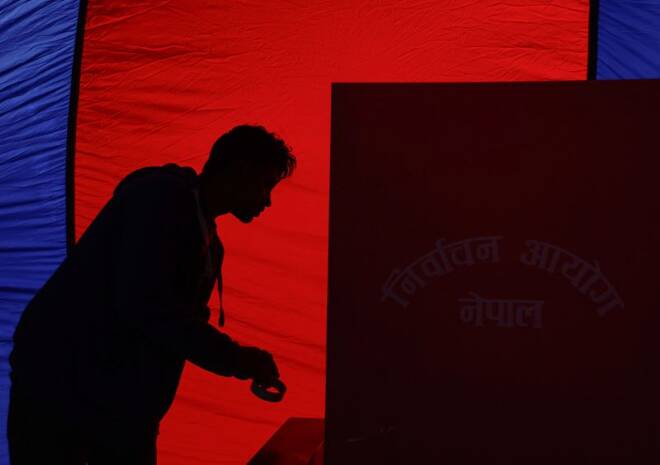Advertisement
Advertisement
Nepalis cast their votes for a new government to revive economy
By:
By Gopal Sharma KATHMANDU (Reuters) - Nepalis were voting on Sunday in a general election that few expect to bring drastic change - or a government able to quickly revive one of the slowest-growing economies in South Asia.
By Gopal Sharma
KATHMANDU (Reuters) -Millions of Nepalis went to the polls on Sunday to choose a new government to steer the Himalayan country through a time of economic peril.
Many women clad in saris and men in jeans and baseball caps stood in long queues to vote in the general election, which pits the centrist Nepali Congress party, led by Prime Minister Sher Bahadur Deuba, against the Nepal Communist Unified Marxist Leninist party.
Rising prices and poor job prospects were top of the agenda.
“I voted for economic development, ensuring jobs, food, clothes, education and health services,” said Rajesh Kumar Subedi, 52, who was the first person to cast their ballot at a voting centre in Phaimlamchuli, a suburb of the capital Kathmandu.
After polling closed, Chief Election Commissioner Dinesh Thapalia said 61% of the country’s 18 million eligible voters had cast their ballots, according to preliminary estimates, down from the 68% seen at the last election in 2017.
“It is less than our expectations,” he said.
One person was killed in a clash during the voting, which was largely peaceful, Thapalia added.
Vote-counting in many places will start late on Sunday, the Election Commission said. It could take up to two weeks to declare final results.
There were no pre-election polls, though political analysts expect the ruling alliance of the Nepali Congress and some former Maoist rebels to retain power.
Political stability has proven elusive for the poor nation, wedged between China and India, discouraging many investors. Nepal has had 10 governments since the abolition of a 239-year-old monarchy in 2008.
A new government will face the challenge of reviving the economy and curbing high prices at a time of fears that a global recession might reduce remittances, which account for about a quarter of gross domestic product (GDP).
Tourism, which contributed 4% to GDP before the pandemic, has yet to fully recover. In the first 10 months of this year, roughly 450,000 tourists visited Nepal, less than half the number seen in the whole of 2019, before the COVID pandemic.
Foreign reserves are shrinking and the retail inflation rate has been hovering at six-year highs of about 8% in the Himalayan nation, where one in five people live on less than $2 a day.
“We need political stability for faster growth of the economy and a government that can guarantee security to investors,” said Prakash Thapa, 25, another voter in the Phaimlamchuli suburb.
Nepal’s 275-member parliament and the 550 members of seven provincial assemblies are elected through a mix of first-past-the-post and proportional representation systems.
(Reporting by Gopal Sharma; Writing by Manoj Kumar; Editing by Gerry Doyle, Christopher Cushing and Pravin Char)
About the Author
Reuterscontributor
Reuters, the news and media division of Thomson Reuters, is the world’s largest international multimedia news provider reaching more than one billion people every day. Reuters provides trusted business, financial, national, and international news to professionals via Thomson Reuters desktops, the world's media organizations, and directly to consumers at Reuters.com and via Reuters TV. Learn more about Thomson Reuters products:
Latest news and analysis
Advertisement
